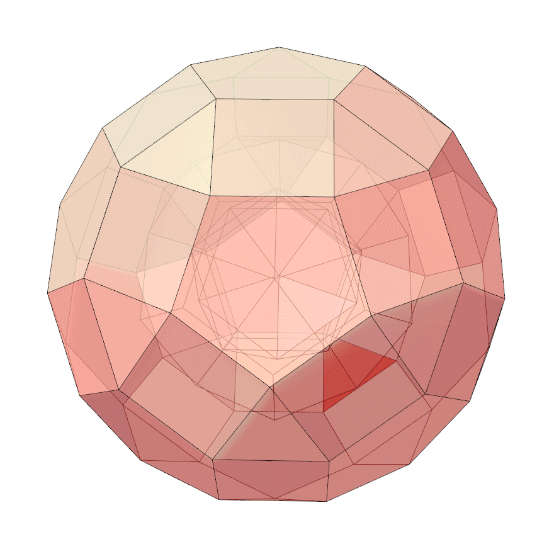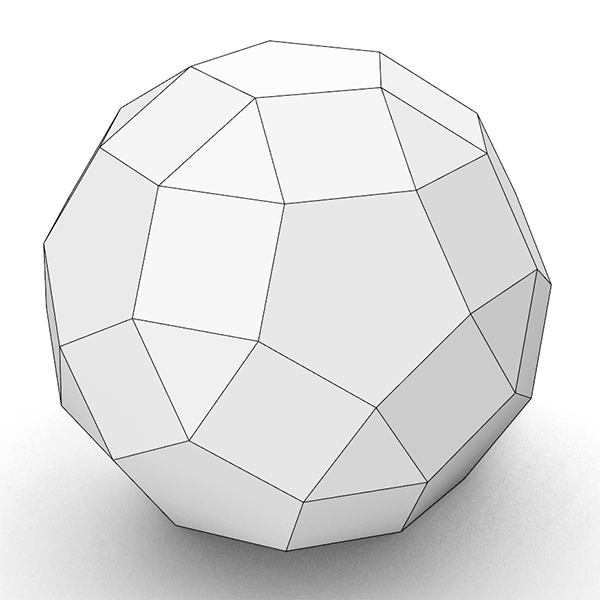Modeling a Rhombicosidodecahedron
by Tuğrul Yazar | July 17, 2024 21:04
Modeling a rhombicosidodecahedron requires exploding and extending the faces of a dodecahedron and an icosahedron of the same edge length. We begin with both polyhedra centered at the same point. Then, we explode the faces of the dodecahedron[1] and icosahedron[2] outward from the center. We extend their planes while maintaining their orientation and shape. As these faces extend, they intersect and form new polygonal regions. Triangular and pentagonal faces emerge naturally from the extended faces of the dodecahedron and icosahedron, respectively. The extended faces from the dodecahedron form pentagons, while those from the icosahedron form triangles. Once these faces are in place, fill the remaining gaps with square faces. This will create a polyhedron with 20 triangular faces, 30 square faces, and 12 pentagonal faces, resulting in the complete rhombicosidodecahedron.
In architecture and structural engineering, we can use rhombicosidodecahedron as a model for designing complex and visually striking structures, such as geodesic domes and decorative elements, because of their symmetry and stability. In chemistry and molecular biology, the geometry of the rhombicosidodecahedron can inspire the design of molecular structures and nanomaterials, including certain types of fullerene molecules. Additionally, computer graphics and 3D modeling are often used to create visually appealing and structurally sound models and meshes.

You can rebuild the model by following the tutorial above. However, if you want to support this website by downloading my Rhino file; would you consider being my Patreon? Here[3] is the link to my Patreon page including the Rhino models used in Modeling a rhombicosidodecahedron and more.

- dodecahedron: https://www.designcoding.net/tag/dodecahedron/
- icosahedron: https://www.designcoding.net/tag/icosahedron/
- Here: https://www.patreon.com/Designcoding
Source URL: https://www.designcoding.net/modeling-a-rhombicosidodecahedron/